Power the Future – The Absolute Spreadsheet Nightmare of Energy Strategy Games
Hello everyone. Sit down, strap in, and prepare for the thrill of… renewable energy policy. That’s right, today we’re cracking open Power the Future, a game that makes you the all-powerful demi-god of national power grids while simultaneously turning your brain into a glorified bank ledger. It’s supposed to be a turn-based strategy epic spanning between 2025 and 2038, but instead, it feels like someone handed SimCity a copy of Bloomberg, locked it in a room with an Excel spreadsheet, and said, “Make love.”
The Premise – Politician Simulator 2038
The hook here is straightforward: pick a country – the USA, Germany, China, India, Australia, Japan, or the UK – then drag it kicking and screaming into a clean-energy future. We’re told you’ll “develop new technologies, deploy them, and balance growth with infrastructure.” Translation? You’ll drown in buzzwords like “intermittent power,” “offshore ammonia” and “orange hydrogen” – which, let’s be honest, sounds less like a power source and more like an exotic cocktail you order at a hipster bar.
Now, the game advertises itself as accommodating to casuals. You don’t need to plan five moves ahead, apparently. Great! Except for the part where the first five minutes present you with hydrogen pipelines, ammonia conversion, and a carbon credit economy, leaving you staring blankly at the screen like you’ve just been handed a doctoral dissertation to sign off on. As a medical doctor, I’ve seen patients look less confused reading their MRI reports.
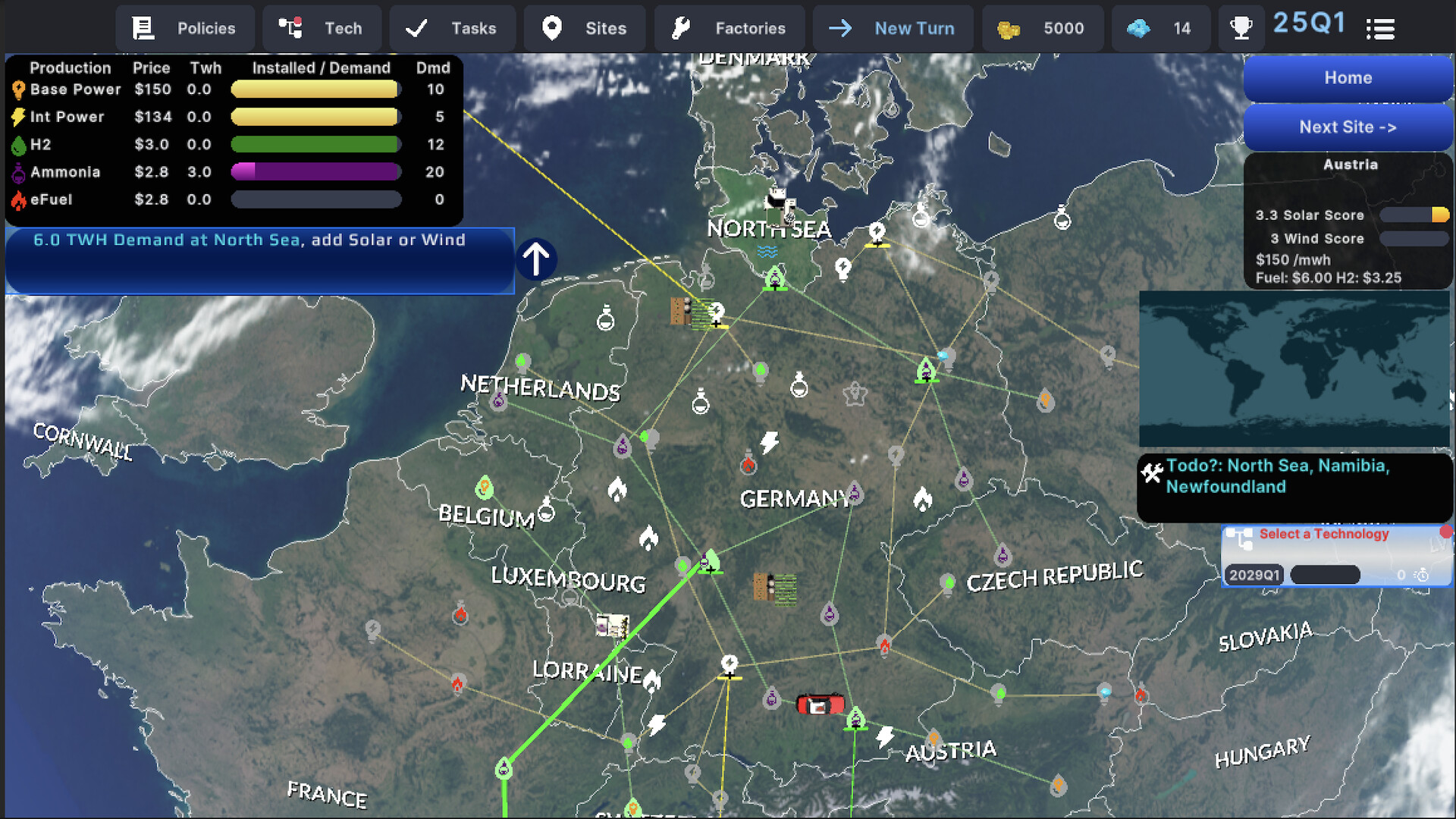
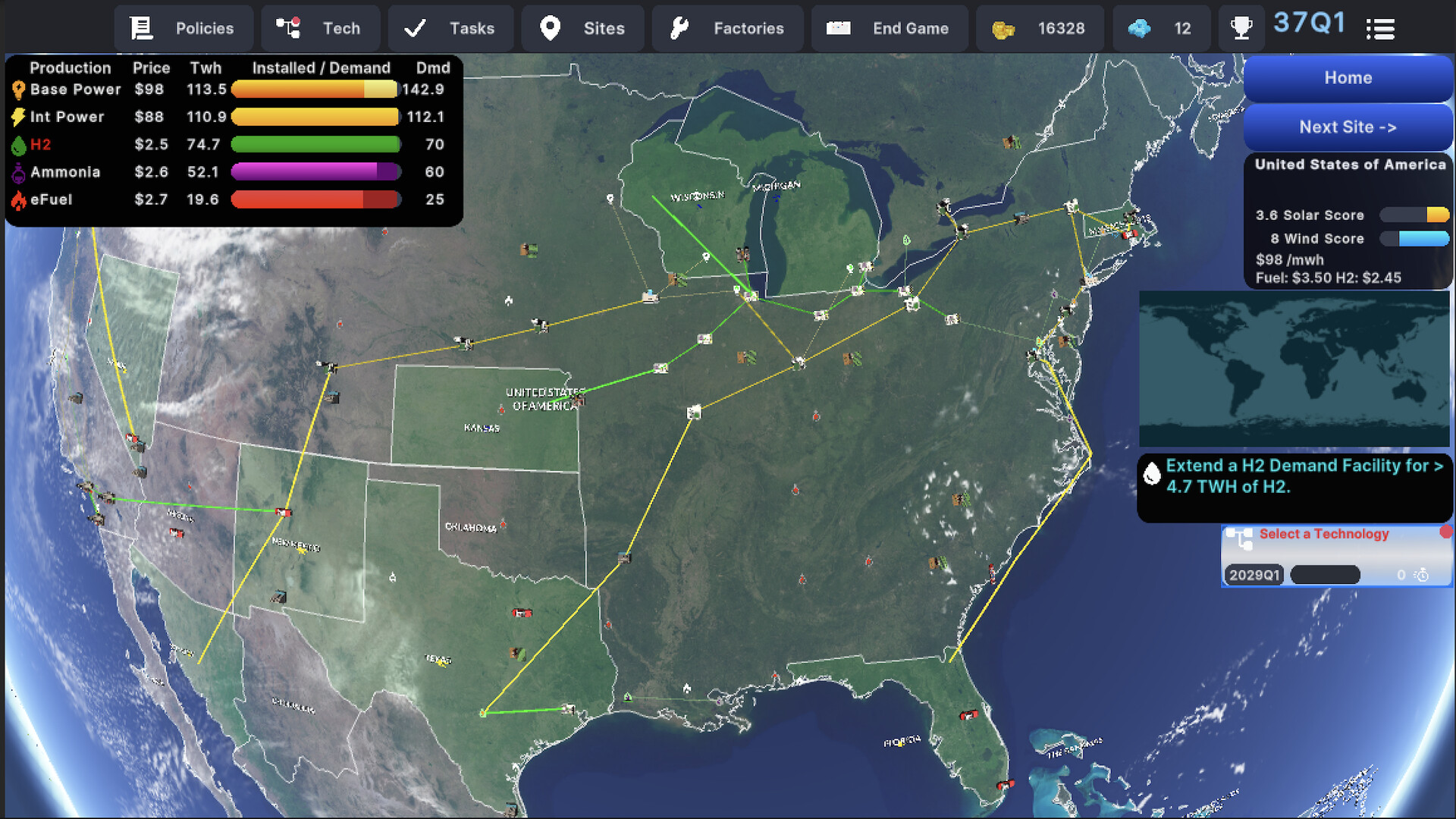
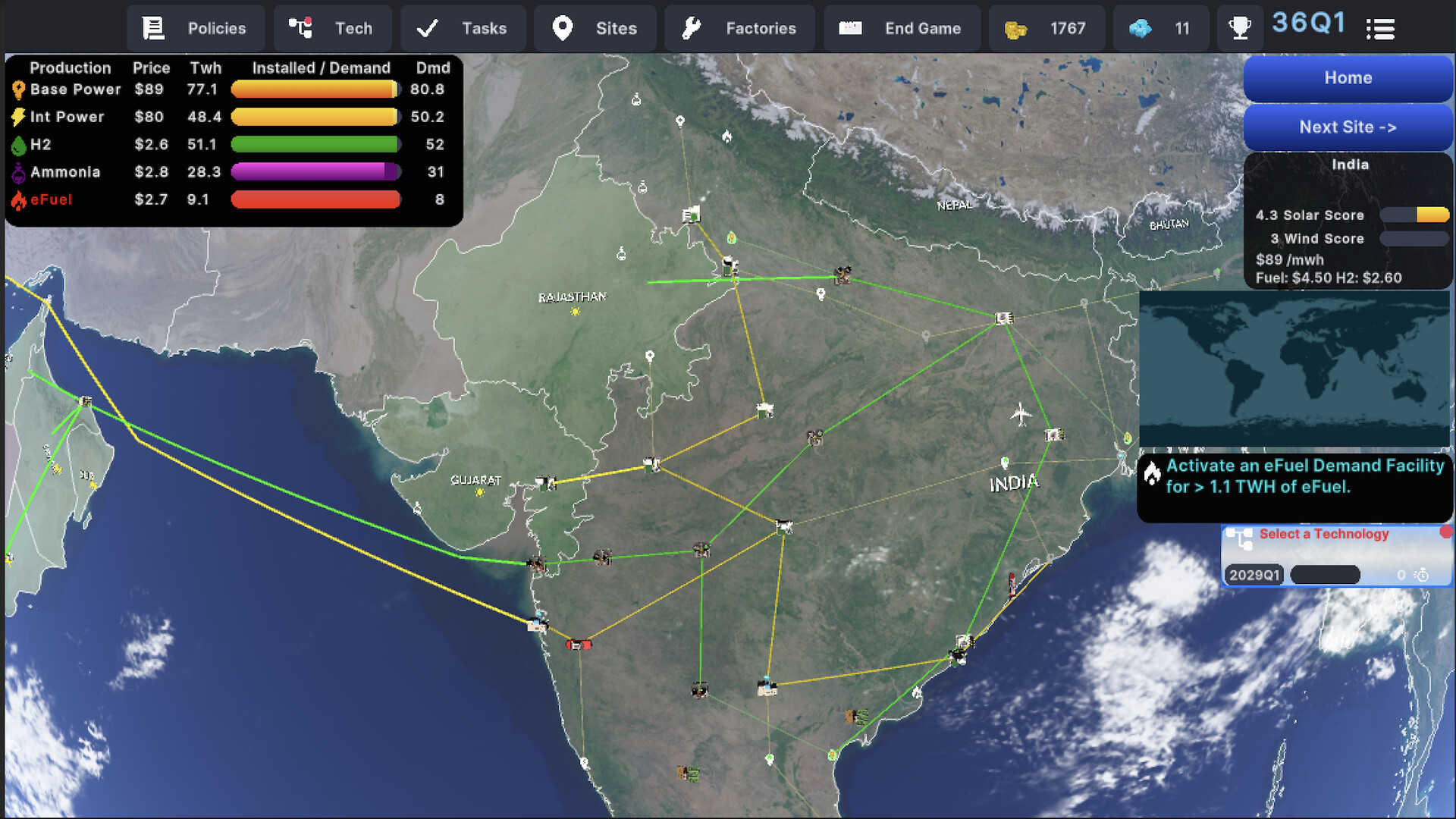
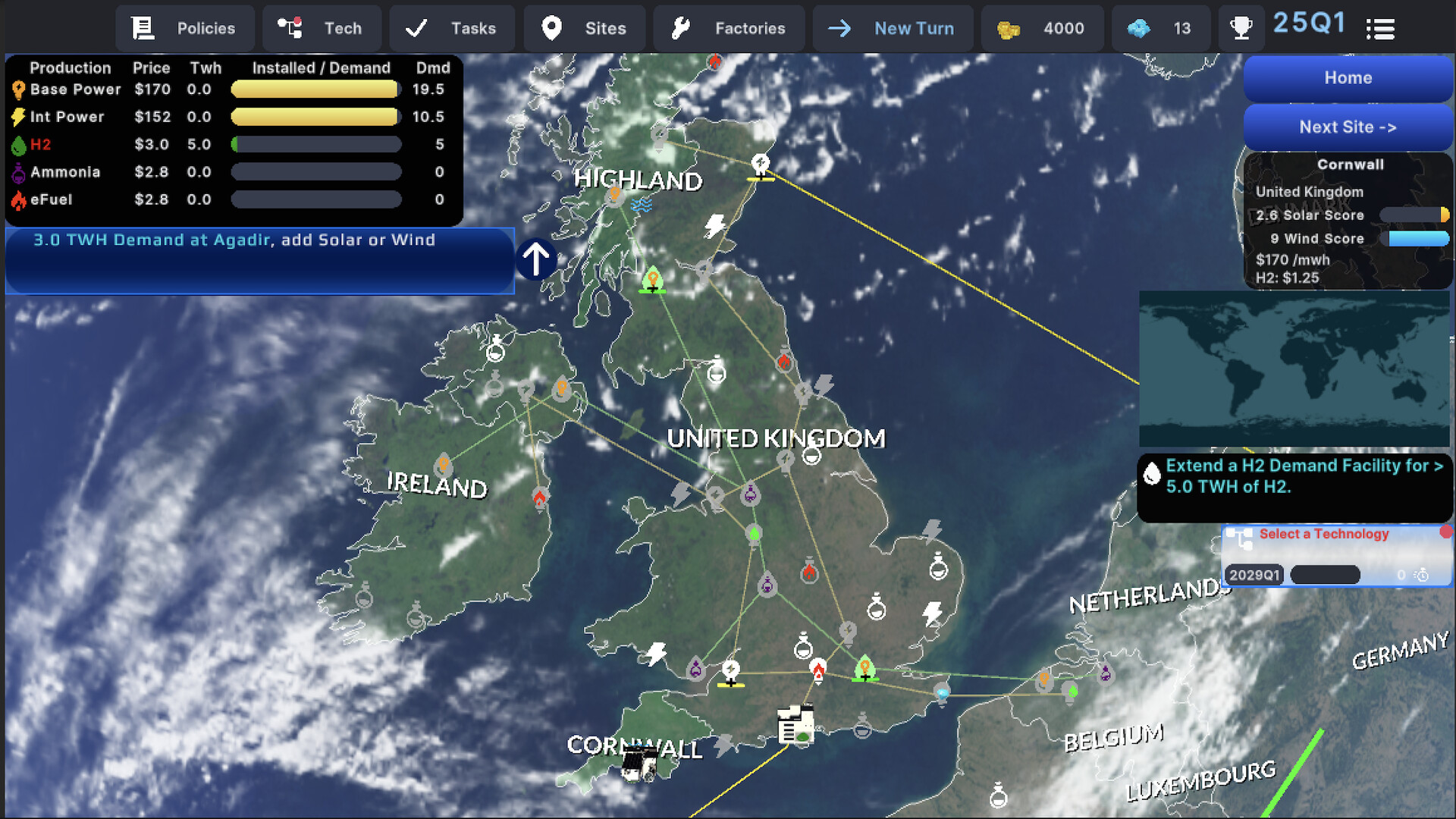
Gameplay – It’s Monopoly, But the Utilities Ate the Whole Board
The key mechanic is straightforward: build infrastructure, slap solar panels anywhere the sun shines, jam windmills on every coastal pixel, then connect everything with enough pipelines to make a plumber salivate. It’s less about cunning tactical maneuvers and more about laying a sprawling spiderweb of wires across Europe or chucking ammonia factories into the sea like they’re candy wrappers.
Each country has unique challenges – cue dramatic music. China and India must grow monstrously fast, Germany must “transition” like the cool kid in EU climate policy club, while Australia gets shoved into its traditional role of “the world’s energy exporter,” except instead of coal it’s ammonia now. The UK and Japan’s focus? Surviving with renewables while quietly weeping over their lack of natural resources. Nothing says gripping game design like “being punished by your geography.”
“Money and Influence are your two currencies. Money represents capital, Influence represents red tape.” Ah yes, my favorite gameplay loop: drowning in paperwork while paying off the IMF. Riveting stuff.
Currency here really drives the lunacy home: Money (in millions of USD) only costs 20% upfront since the bank always foots the rest – because what’s more realistic than endless debt? Influence, meanwhile, is an abstracted points system for bureaucracy, lobbying, and planning. In theory, this forces hard decisions. In practice, it feels like someone’s gamified the Department of Energy’s annual budget report, and accidentally left the fun behind.
Technologies – Great, Another Buzzword Bingo
This game is obsessed with stuffing every futuristic energy concept imaginable into your lap. Real talk? Half of it is fascinating from a scientific point of view, but as a piece of interactive entertainment, it’s like attending a lecture given by your most enthusiastic engineering professor with all the charisma of a potato. Allow me to list some of the shining stars:
- Space-Based Solar: Beam power from orbit! Practical? No. Cool? Sure. Worth building in-game? Probably another financial black hole.
- Orange Hydrogen: Lock CO2 in rock, produce Hydrogen, claim carbon credits. A neat chemistry trick, but feels like DLC designed by a geologist who lost his sense of humor.
- Offshore Ammonia: Which sounds less like energy production and more like something you can’t bring on an airplane.
Here’s the kicker: all 14 technologies are available to every country right out of the gate. This robs any sense of national identity or player adaptation. Why bother roleplaying Germany’s tragic hyper-dependence on foreign power when you could just slap down Space-Based Solar panels and laugh in fossil fuels’ face? It’s the equivalent of handing every RPG class Excalibur at Level 1. Balancing? What balancing?
AI Generated Assets – Because Nothing Screams Style Like Generated Icons
Oh goodie, the store icons and visuals are AI-generated. Because that’s exactly what I want in my strategic masterwork: placeholder-grade clip art churned out by an algorithm that couldn’t pass a high-school art class. Nothing says immersion like recognizing the same Shutterstock-smelling blob you saw on five indie titles back to back. To which I say: if the visuals are this disposable, how passionate could the developers truly be about their own product?
System Specs – As Lightweight as the Gameplay Depth
Credit where credit is due: this game barely takes up 3GB. The specs for both Windows and macOS are comically middle-of-the-road, proving that even your grandma’s potato laptop could run this at full blast. Smooth framerates won’t save you from the fact that this is essentially Spreadsheet Wars 2025 Edition, but hey, at least your computer won’t set itself on fire trying.
Fun Factor – The Missing Ingredient
Let’s be blunt: modeling energy grids is not inherently “fun.” You can fine-tune it, abstract it, and slap in some shiny leaderboards all you want, but when you boil it down, you’re transporting ammonia across the map while waiting for your GDP score to tick up. There’s no “high” when your plan succeeds, no tension-filled payoff, no emergent drama. You’re not saving the world; you’re optimizing glorified math problems masquerading as nations. Someone in design clearly thought, “our game is a teaching tool” – well congratulations, you’ve built a chemistry class in Unity.
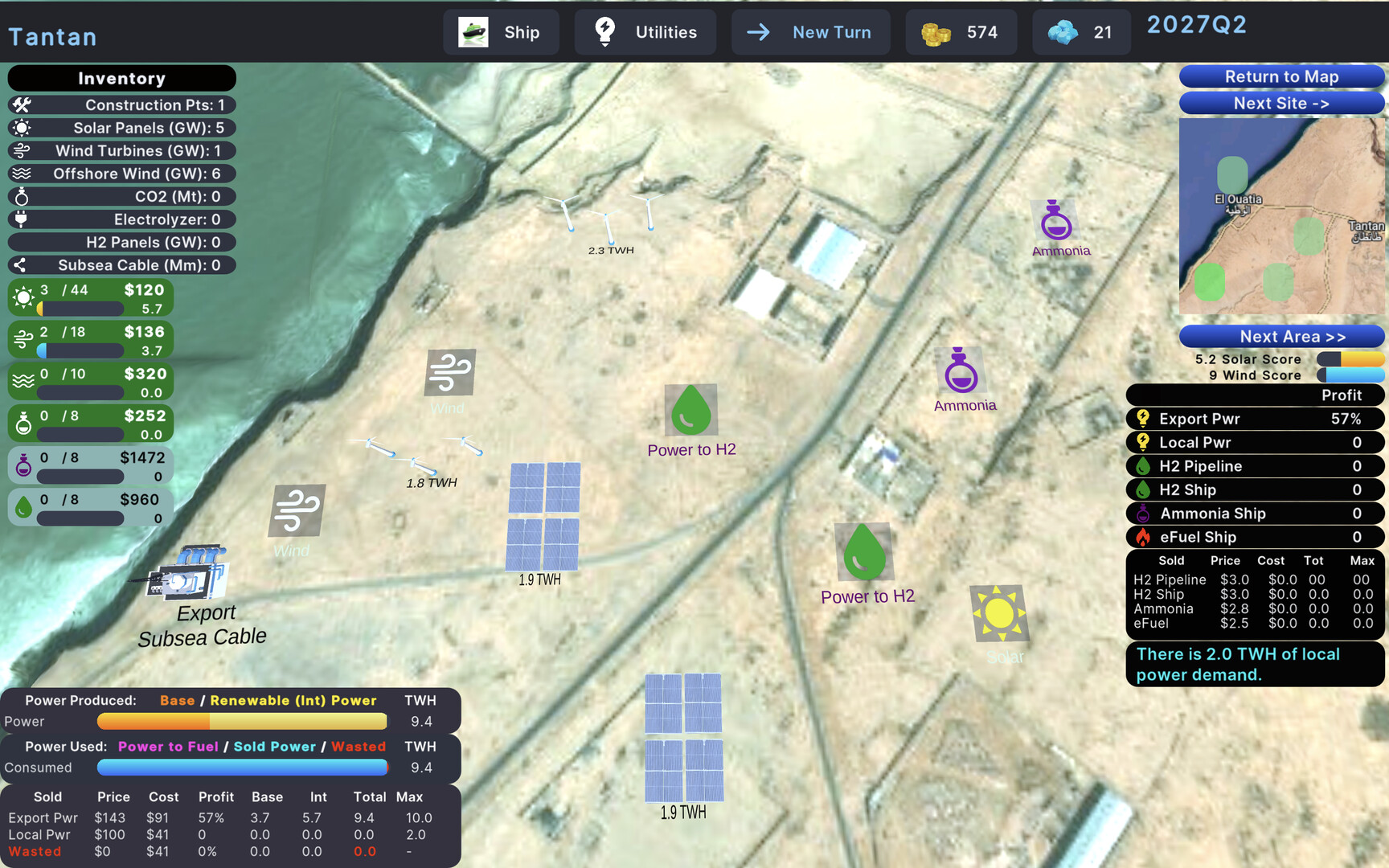
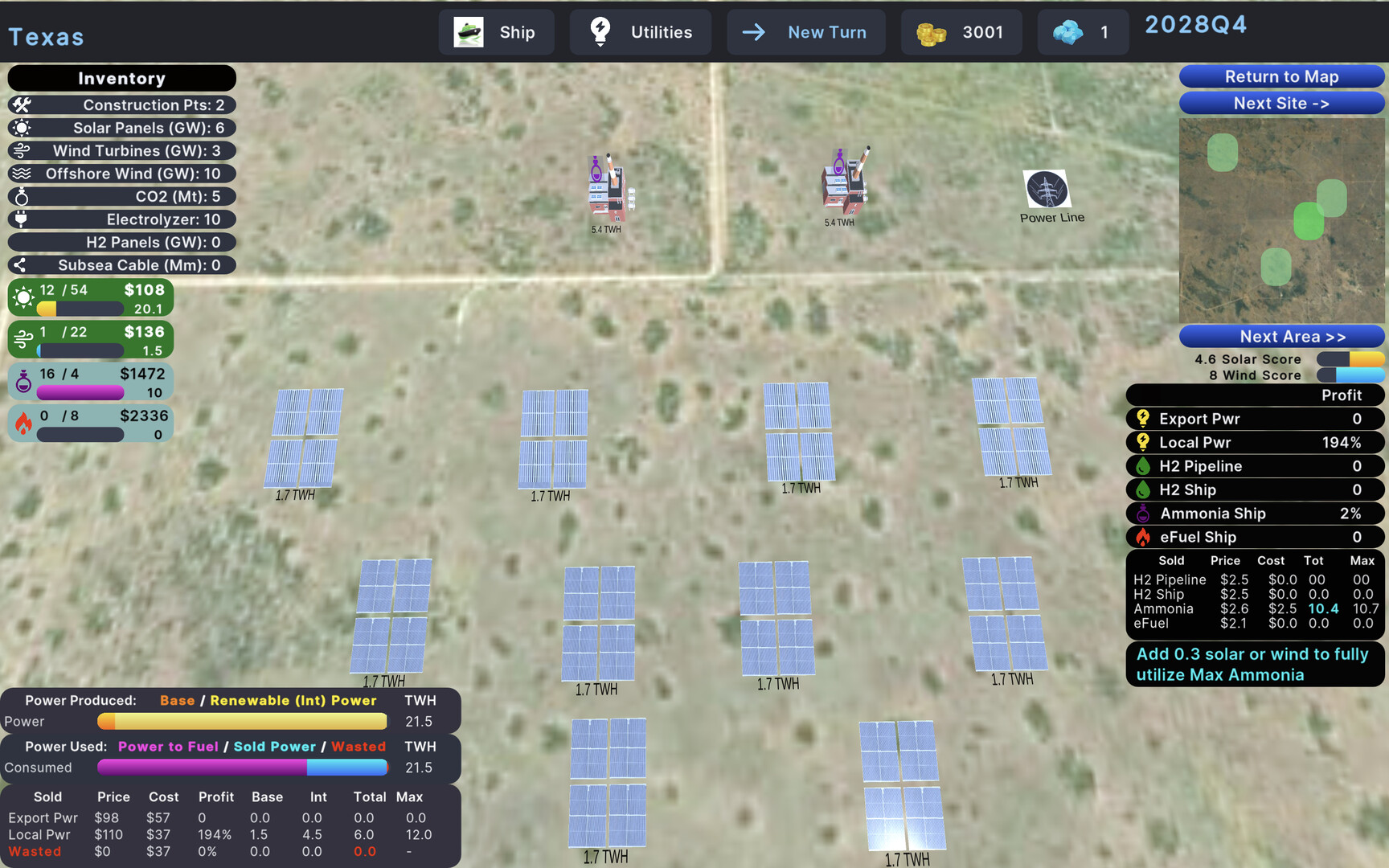
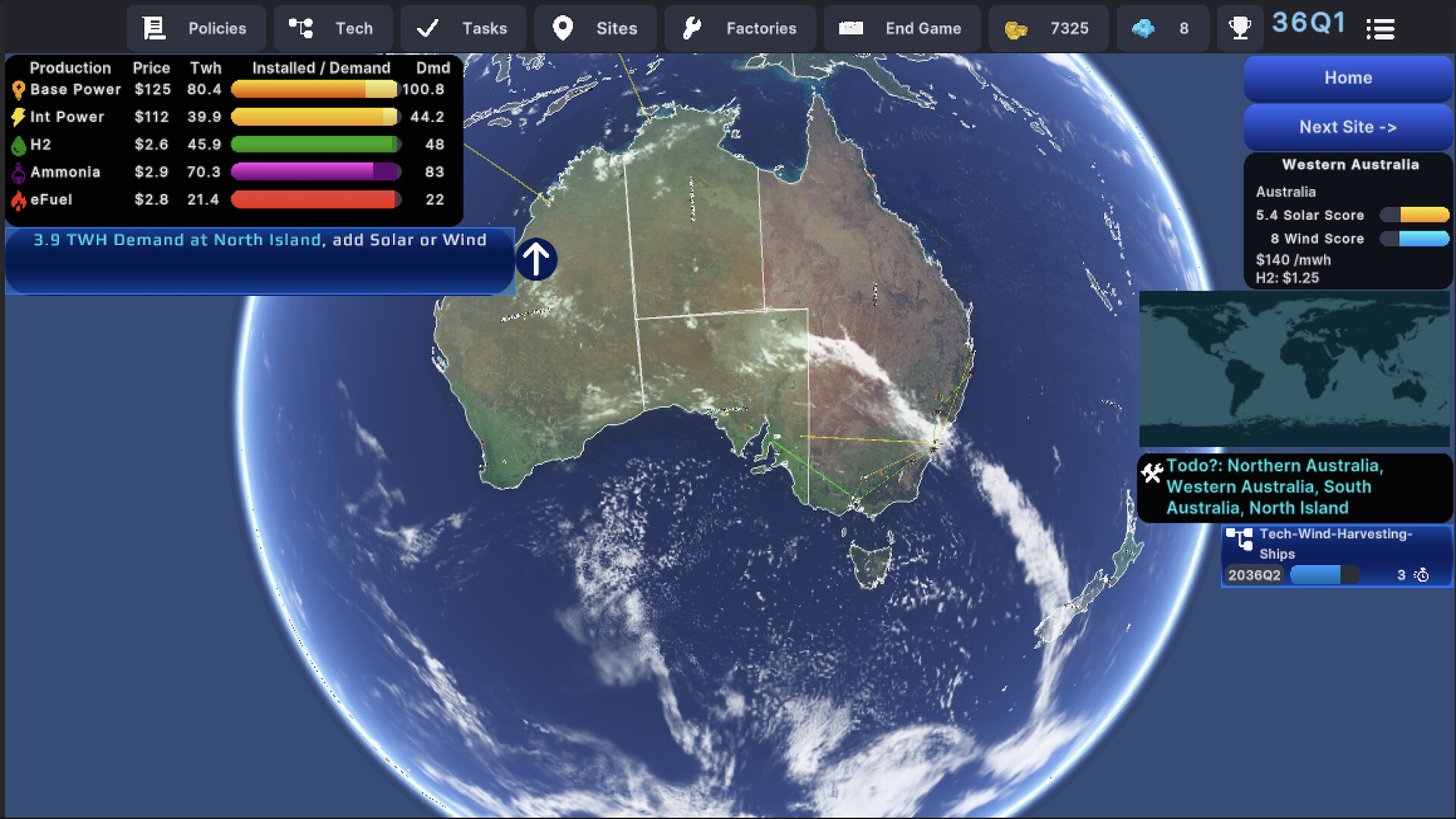
Doctor’s Note:
Prescribing Power the Future for insomnia. Side effects include mild boredom, compulsive spreadsheet checking, and dreams about hydrogen pipelines. Consult your Steam refund policy if symptoms persist.
Conclusion – A Game for Policy Wonks, Not Players
Here’s my problem in one neat package: Power the Future has all the heart of an environmental policy paper and none of the soul of an engaging strategy game. I get it – we all need to learn about renewable resources, shifting grids, and the impending doom of overconsumption. But a game, by its very definition, should be more than waiting to see whether your ammonia investments will finally pay off in 2034.
If you want to play ‘Doctor Bureaucrat Saves the Grid,’ this is your holy grail. For everyone else – especially actual strategy gamers looking for battles of wit, deception, and triumph – this is just another energy sim too obsessed with being a glorified lecture. At best, it’s educational. At worst, it’s a $20 screensaver for people who think Factorio is too exciting.
Verdict? Bad. Not unplayable, but uninspired. This is one of those releases destined to gather dust in people’s Steam libraries, just waiting to be wheeled out in 5 years as a failed prediction of gaming’s future.
And that, ladies and gentlemen, is entirely my opinion.
Article Source: Power the Future Demo


